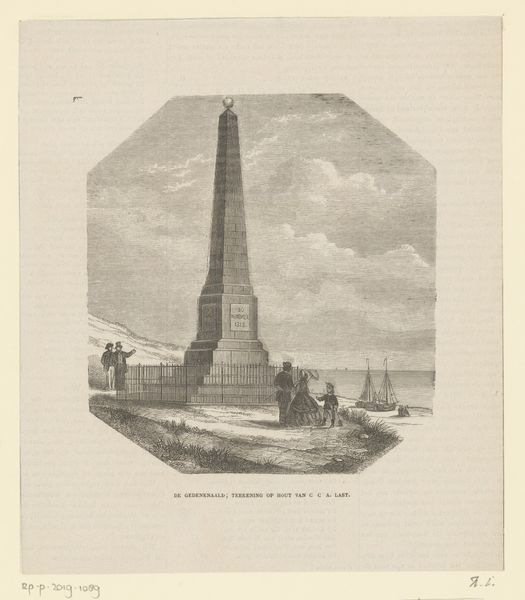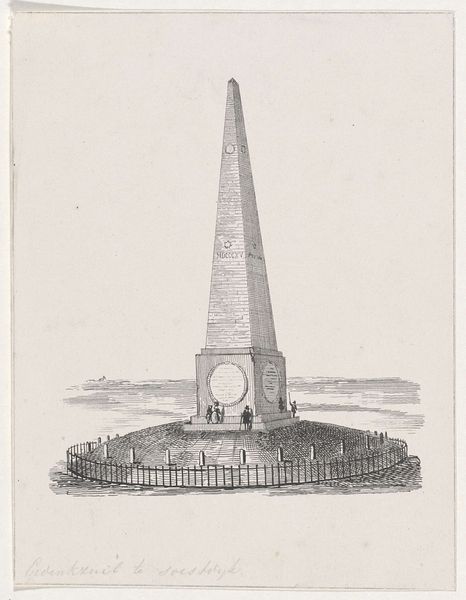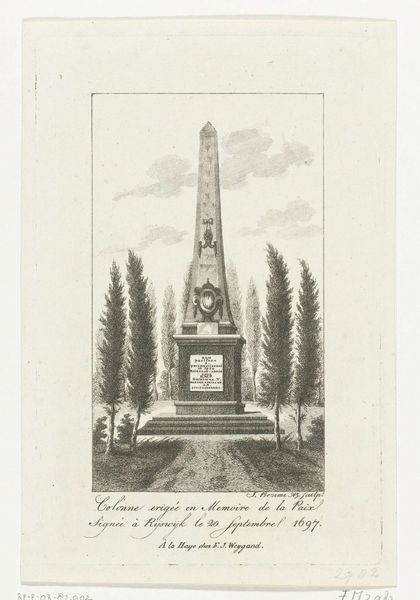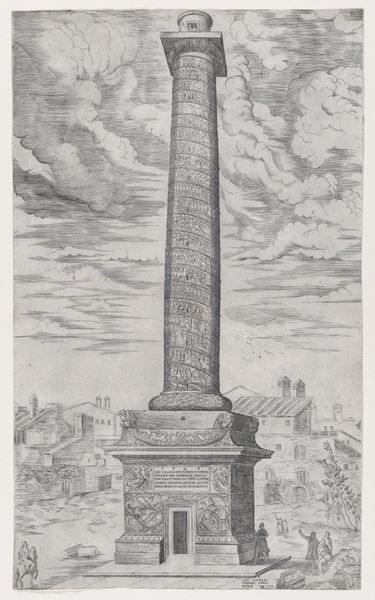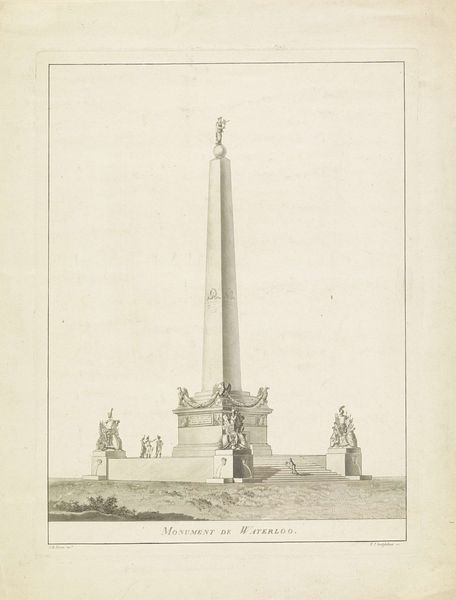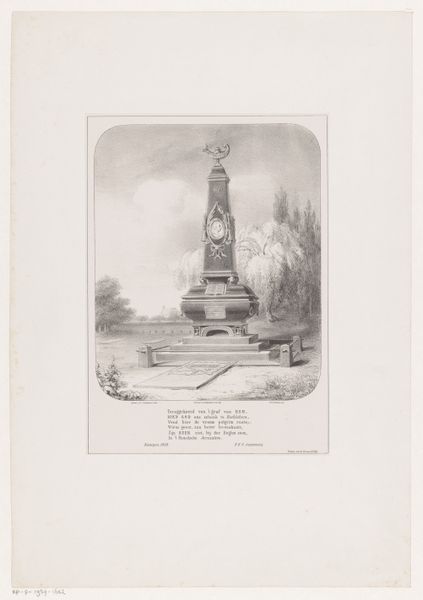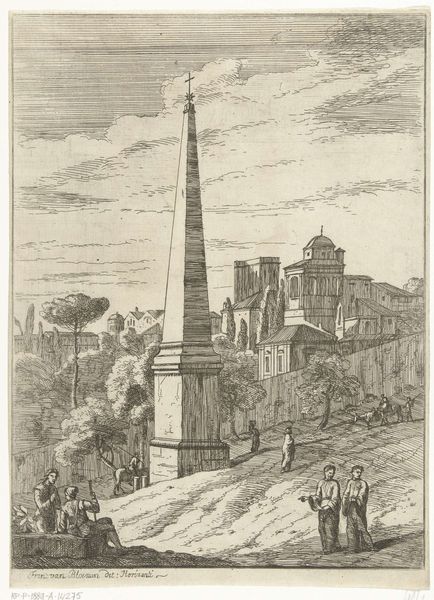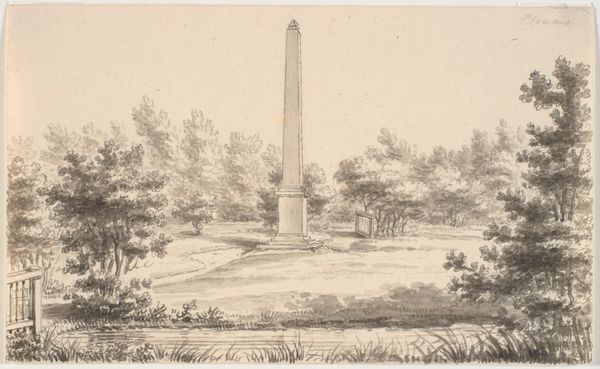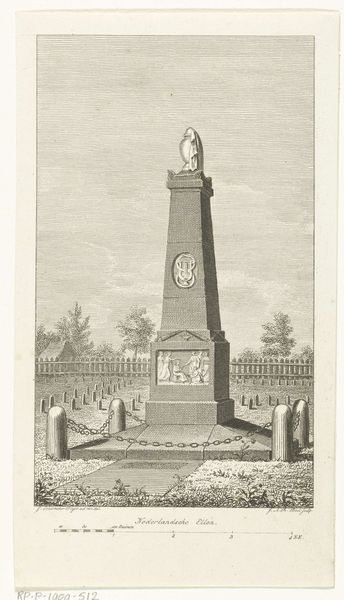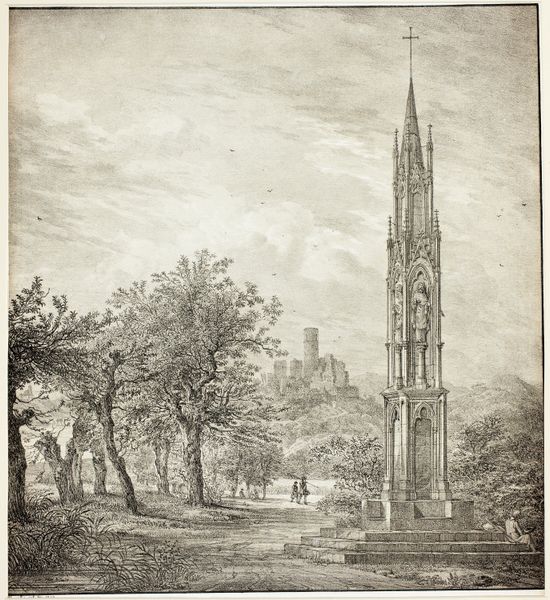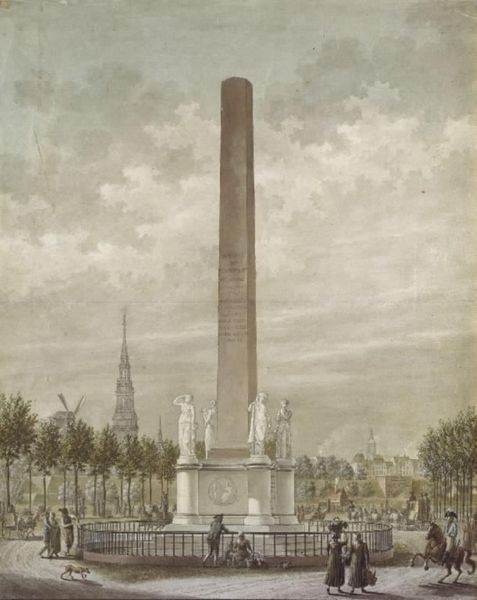
De Naald van Waterloo, monument ter ere van de Prins van Oranje, te Soestdijk, 1815 1835
0:00
0:00
gerritlamberts
Rijksmuseum
drawing, pencil
#
drawing
#
neoclacissism
#
pencil sketch
#
landscape
#
pencil
#
cityscape
Dimensions: height 297 mm, width 264 mm
Copyright: Rijks Museum: Open Domain
Editor: This is "De Naald van Waterloo, monument ter ere van de Prins van Oranje, te Soestdijk, 1815," a pencil drawing by Gerrit Lamberts from 1835, currently residing here at the Rijksmuseum. It has a very somber, almost reverent feel. What aspects of the composition stand out to you? Curator: The formal elements create a striking interplay. Notice how the obelisk’s rigid verticality dominates the pictorial space, juxtaposed against the subtle undulation of the landscape and the more organic forms of the trees. This tension between the geometric and the natural generates a powerful visual dialectic. How does the treatment of light contribute to this dialogue? Editor: The shading seems to emphasize the monument’s shape, giving it a weighty presence, but also highlights its starkness against the softness of the sky. Is this a conscious use of contrast to enhance the monument's importance? Curator: Precisely. Lamberts manipulates tonal variations to underscore the monument's mass and to articulate its architectural details. The interplay of light and shadow serves to solidify the monument’s presence within the composition, lending it a distinct sense of gravity. Observe how the artist's strategic application of pencil evokes depth and texture. Does this, to you, augment or detract from the intended Neoclassical ideals? Editor: I'd say augment. The pencil medium, despite its subtlety, reinforces the monument's stoic and imposing qualities. I better understand how Lamberts orchestrates formal elements to articulate meaning. Curator: Indeed, appreciating these choices helps decode the intrinsic language of the work.
Comments
No comments
Be the first to comment and join the conversation on the ultimate creative platform.
